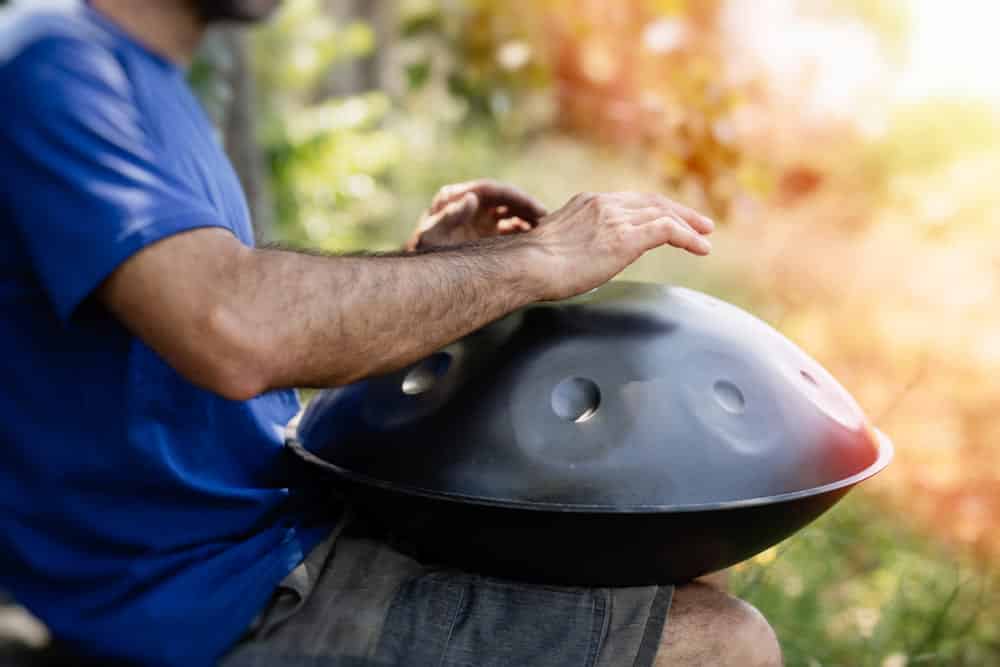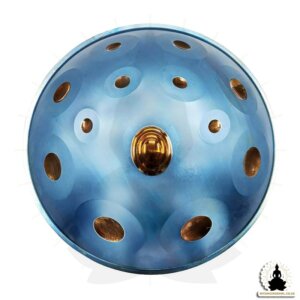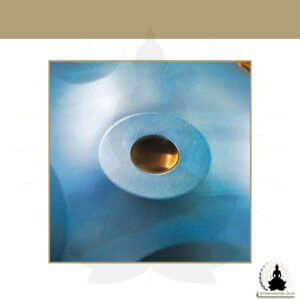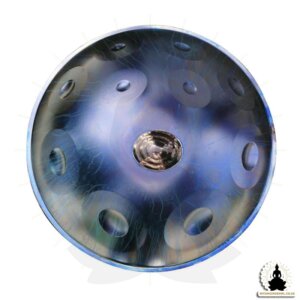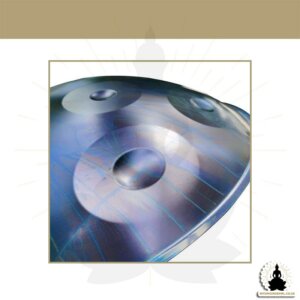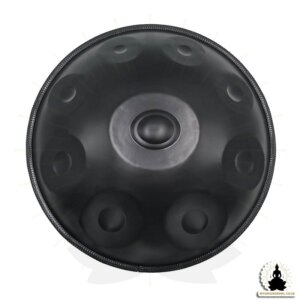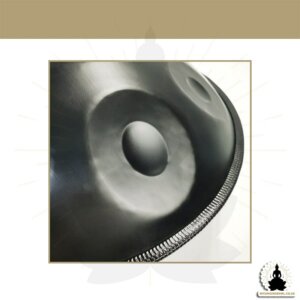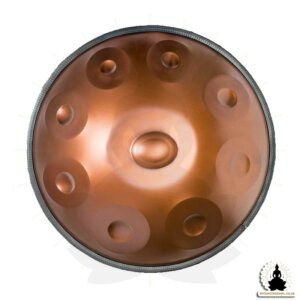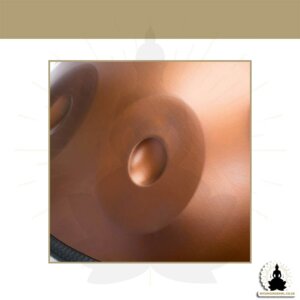Handpan
How do you learn to play the handpan ?
A lot of people fall under the handpan’s spell but hesitate getting one for one very specific reason: they are afraid of not knowing how to play it!
It’s a valid reason, since we are used to conventional instruments which require music theory classes and years of practice to be able to start to produce melodious notes… But this isn’t at all the case with the handpan.
Let’s be clear- to play this instrument like a pro, it’s no secret that you need a lot of practice. But, unlike most other musical instruments, it is very easy to start playing without any musical knowledge.
Here we will explain how.
Starting with the handpan
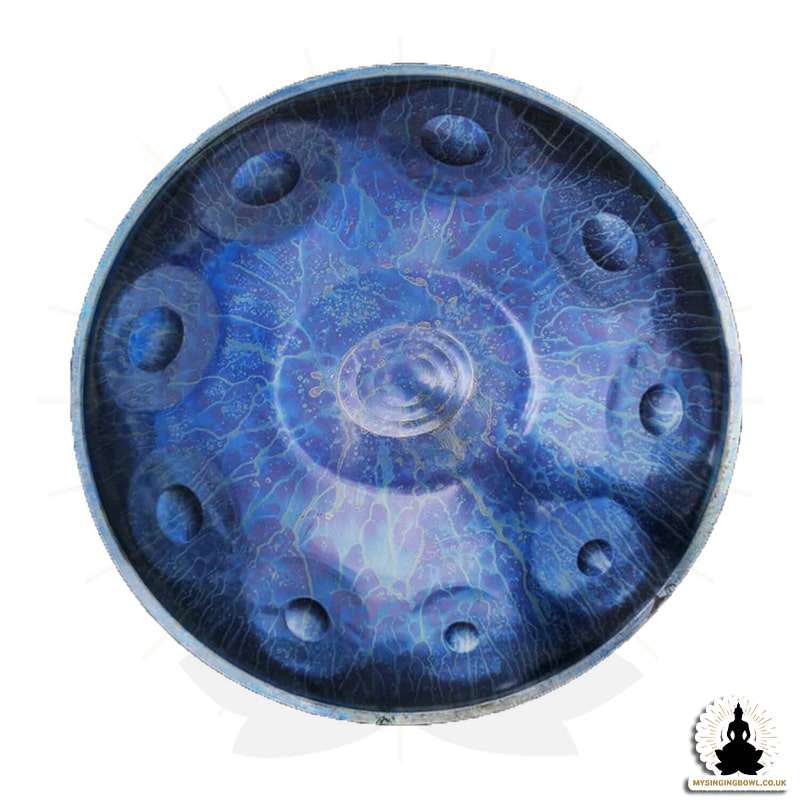
Your new handpan has just arrived, it sits proudly in the middle of your living room, you want to try it out but you aren’t sure where to start?
Place your handpan on a table, find a comfortable place to sit in front of it, and discover your instrument:
- In the middle, you have a raised (apex) or hollow (inpex) circle which corresponds to a note called “ ding ”
- Surrounding this, you have 8 (sometimes 7) harmonic notes.
- And that’s it!
Now for the most important phase of the learning process: the discovery of personal enjoyment. Never forget that your aim is to feel good whilst playing the handpan, not for you to perform in front of thousands of fans in awe of your talent.
Enjoy playing notes, trying playing it with different fingers, different combinations, different rhythms… There are no rules, and no audience judging you.
The discovery of this instrument is often rushed by those who want to go too fast. In general, these are the same people who store away their handpan in a cupboard forever after just a few weeks under the pretext of “actually, it’s not as great as people say it is.”
Don’t make the same mistake, and take your time learning how to enjoy yourself using the handpan. Again, it is impossible to “play badly.” All of the notes that you play are precise, so you won’t be able to go wrong.
So you’re having fun- are you able to play notes with all of your fingers? Are you ready to play more melodious tunes? It’s now time to move onto the next step.
Improve and master basic rhythms

From here you can start playing different rhythms and melodies. Now is the time when you gain the dexterity to play your choice of notes, but also the necessary coordination to hold a rhythm.
It is difficult, impossible even, to continue learning independently and you should follow the advice of a teacher. To do so, you have three options:
- Register for private lessons, whether that is with a qualified teacher (the recommended method) or with a friend “who knows their stuff” (they can help a beginner).
- Follow a free online tutorial.
- Take a paid online course.
Which is the best option? That is entirely up to you, your goals, your level, and your budget.
It is better to start with a free tutorial, which will allow you to form an idea of the different notes and rhythms, without having to dip into your pocket. Once you feel confident with the basics, it could be beneficial to call a professional.
Private lessons offer the enormous advantage of having someone by your side who can give personalised advice and help detect any mistakes or bad habits.
The big advantage of an online course is the possibility of repeating the same lesson as many times as you like, at whatever time, day or night, according to your schedule.
During this stage, consistency is key. You should play, try, learn and store information until it becomes second nature. This is how you will gain the necessary basics to be able to progress further.
PLEASE NOTE : Be careful that lessons and tutorials that interest you are those aimed at beginners, and not (yet) intermediaries!
Going further with the handpan
If you have followed the first two steps, you will have learnt how to have fun playing the handpan, but also understand the basic rules of playing it. It may not seem like much, but all those who actually practice this instrument will tell you how essential the first two steps are if you want to go further.
Now, you can throw yourself into intermediate-experienced level classes and tutorials, in order to learn more advanced rhythms, rules of melody composition, playing techniques, possible effects… all the little nuances that make great handpan players.
During this stage you will be able to refine your style. Some exercises may seem simple to you, and others more difficult. Certain sounds and melodies will sound amazing to you, and others underwhelming. It is important to recognise them, master them, and start to personalise your music.
At this level, you can already boast that you are a handpan player, able to play a number of tunes and improvise new melodies. You will be quite skilled in playing this instrument to be able to help a beginner get started, and besides, since you are passionate, you can try and convince your friends to start playing the handpan!
Becoming a great handpan player
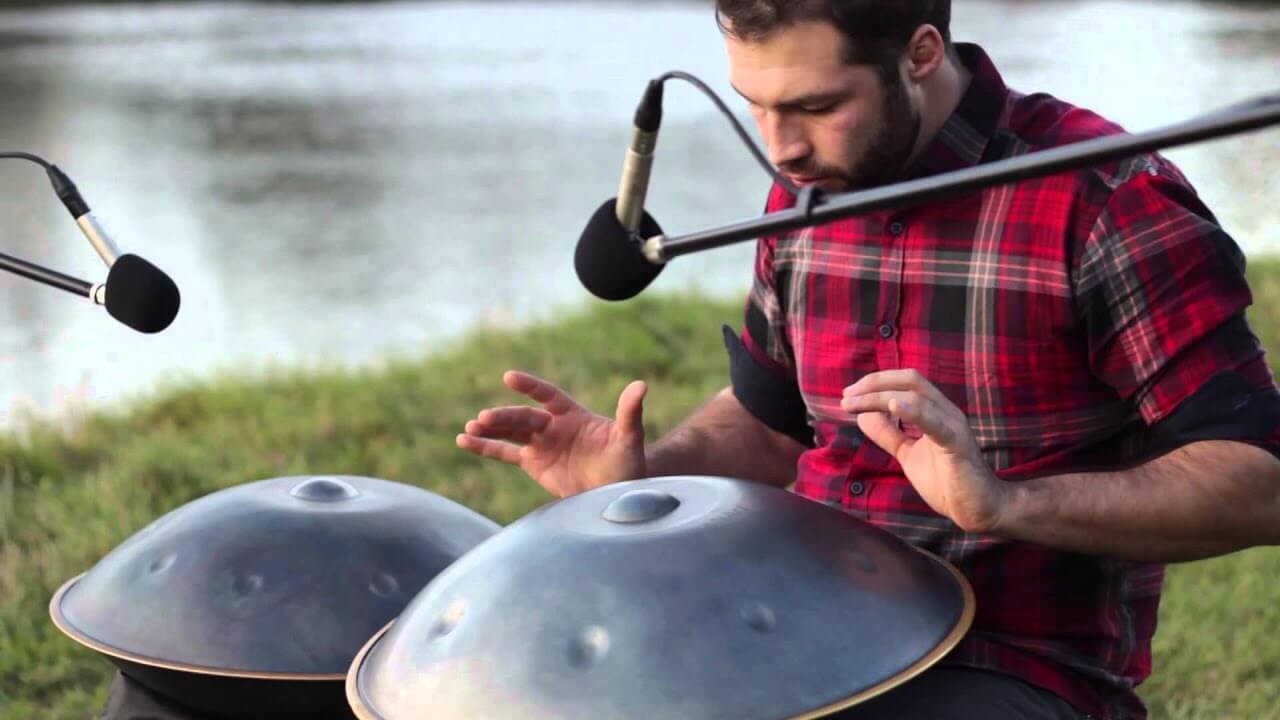
For this final step, there is no magic formula! You need to play, and play, and play some more. And of course, be talented!
There are some courses which help to deconstruct the movements of the world’s best and learn their technique. By repeating over and over again, you will certainly be able to copy them, but don’t forget that to be a part of the closed circle of great handpan players, you have to be able to add your own personal touch, that you developed in the previous step.
IN CONCLUSION
Don’t overlook the discovery stage of your instrument. This is what makes the difference between those who play the handpan, and those who say they play the handpan.
The second stage, during which you learn the basic movements, can sometimes prove to be frustrating. Don’t be disheartened- this is the necessary foundation required to create your art!
From the third step, everything clicks in your mind. You progress quickly, and feel more and more like “I really know how to play the handpan.”
The last step… Let’s be honest: few people get to this point and become great musicians. But it’s a real pleasure to try and walk in the footsteps of the greats, and when we are able to follow them, the satisfaction is immense!

